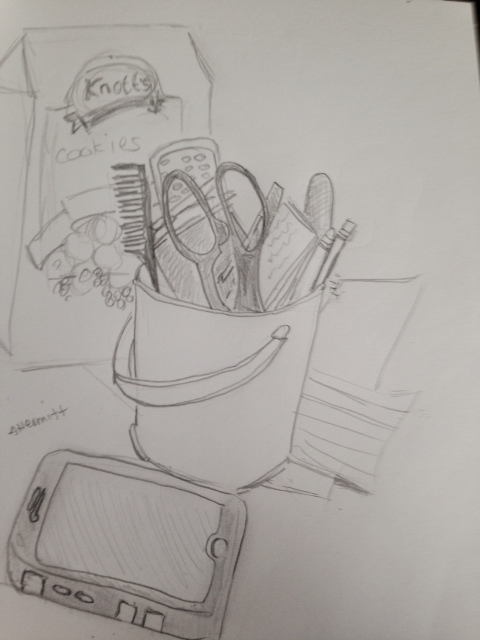sketch a day-day 4 I looked at some of my work from 25 years ago today... It was in the garage. I am going to toss it, after taking a few pictures because it is all charcoal and has become muddy over the years. Still, there are some good things about it. I will take some photos before trashing it. One thing I noticed is that there is a slight slant to everything I draw. I think it is because I don't sit still and I don't hold my head still... I move around and kind of lean to one side, so there is also a slight lean in my work. You can see it in this candlestick drawing from my mantle. Also the middle candle is out of perspective because I drew it first and then when I moved my persecutive, I did not change it. But... nothing in life is perfect, and interestingly enough, my most slanted, imperfect pieces have been purchased (long ago, when I drew regularly).... so there is clearly beauty in not getting it quite right. Perfection is a dangerous thi...



